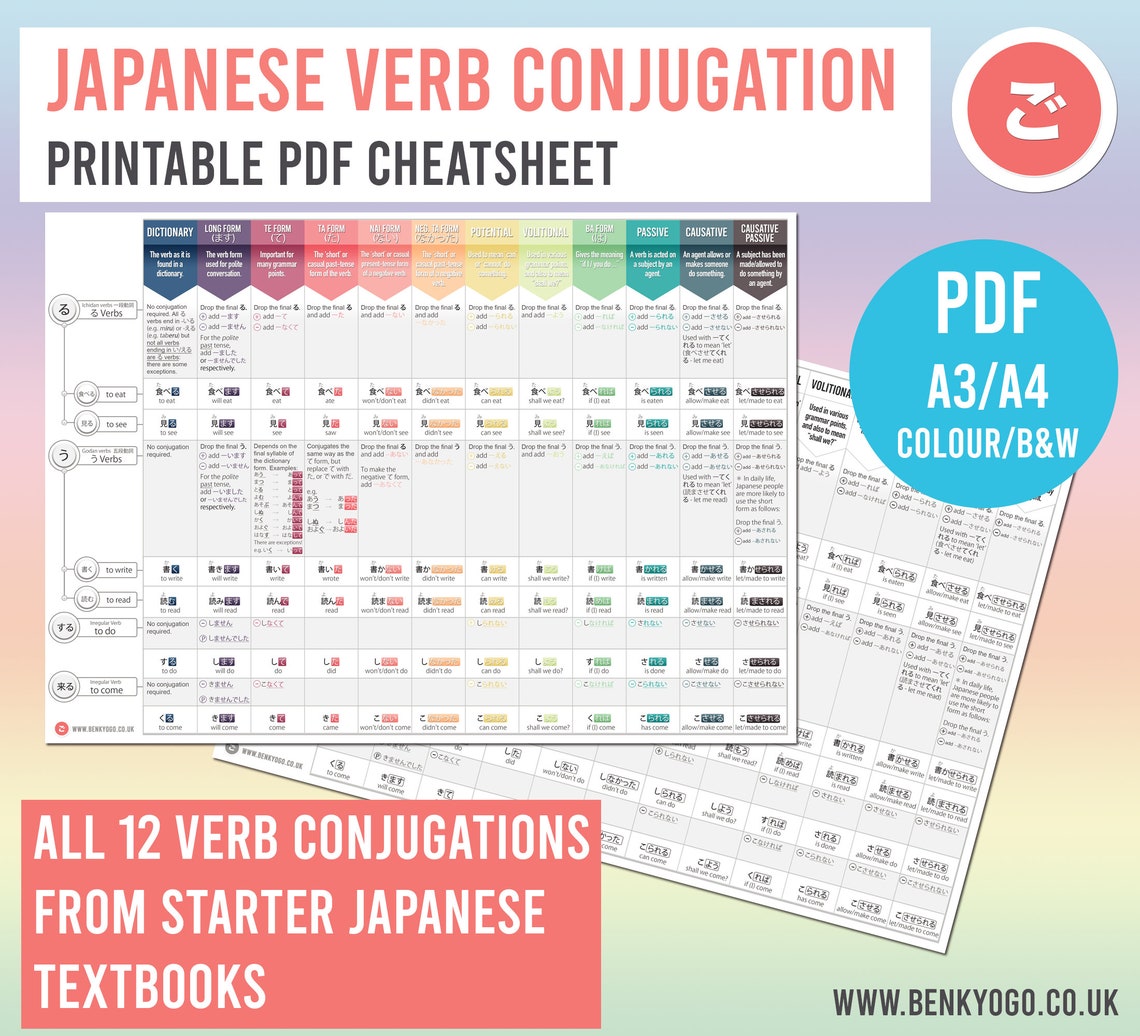
Printable Japanese Verb Conjugation Cheatsheet NEW UPDATED Etsy
Conjugation in Japanese is described as the variation of the form of a certain part of speech—such as verbs—which is influenced by certain elements. These include: voice, mood, tense, and politeness level. In Japanese, there are four parts of speech which have conjugation: 動詞 ( dōshi) — Verb 助動詞 ( jodōshi) — Auxiliary Verb
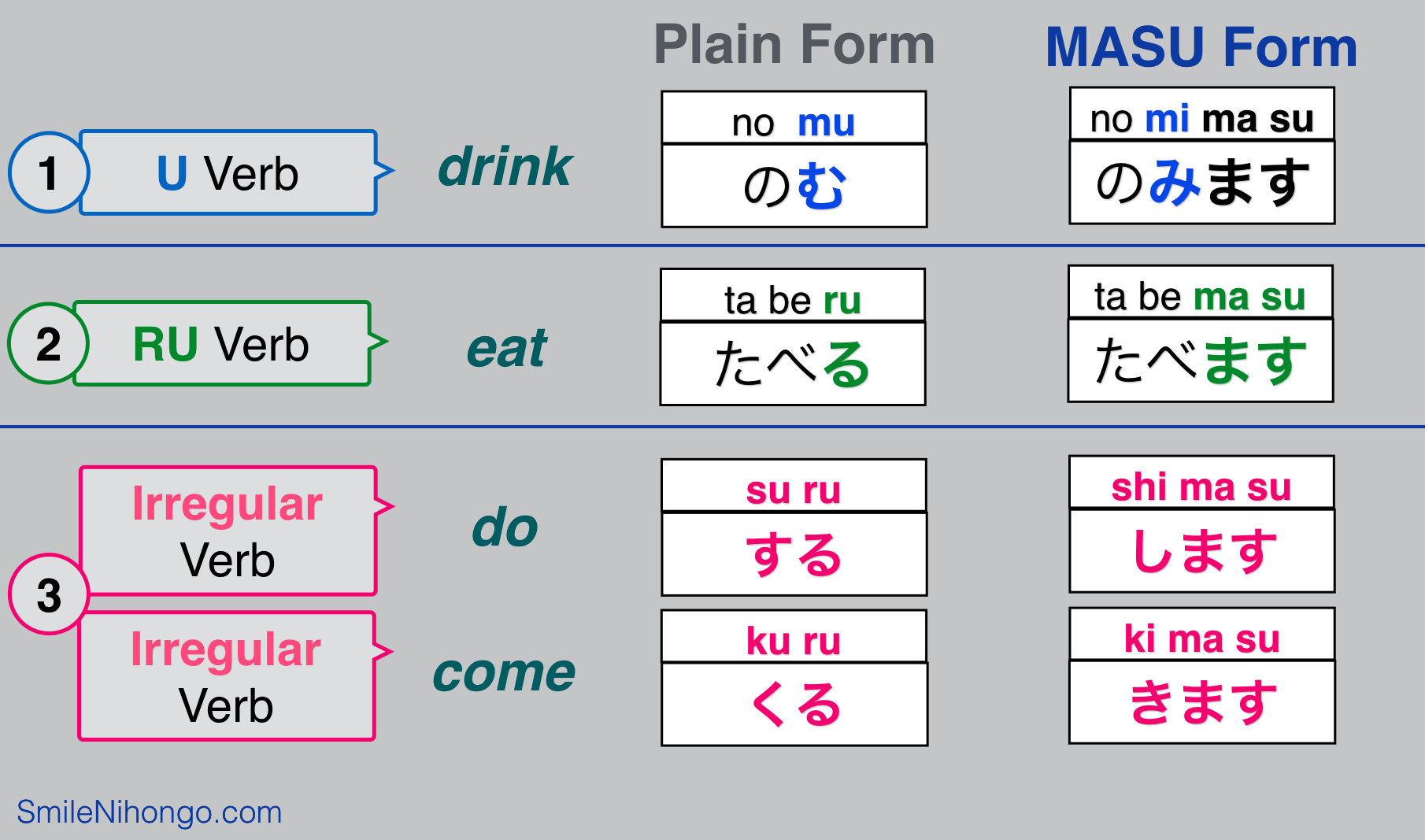
What Japanese Verb Forms to Use Download the Verb Conjugation Chart
Japanese verbs conjugate to express tenses, to connect with other phrases, and to show various nuances. Compared to other languages, Japanese conjugation types can be a bit more complicated. There are many different verb forms as well as polite forms. The conjugations can even be combined together! Ru-verbs, U-verbs, and Irregular Verbs

Japanese verb conjugation Wish Form
Next, 〜ます-form of verbs is the most used conjugation of Japanese verbs. 〜ます-form is an auxiliary verb that emphasizes politeness. Like 〜です, 〜ます always comes at the end of the sentence and never stands inside of a sentence. Check out these examples:.

Printable Japanese Verb Conjugation Cheatsheet NEW UPDATED Etsy
Japanese verb conjugation basics. 1. Ru verbs. These are verbs that end in -iru and -eru. Examples of this are miru (みる), which means "to look" and taberu (たべる), which means "to eat". 2. Irregular verbs. Thankfully, there are only two irregular verbs in Japanese! The 2 irregular Japanese verbs are suru (する), meaning.

Japanese Verb Rules Volitional Form
Japanese verb conjugation has unique rules from those in English. But don't worry! Some features are simpler—there's no verb conjugation based on the speaker, such as singular vs. plural, gender, or the category of that person grammatically, called 人称 ( ninshō ). This means that in English, verbs change based on who's speaking: I am She is You are
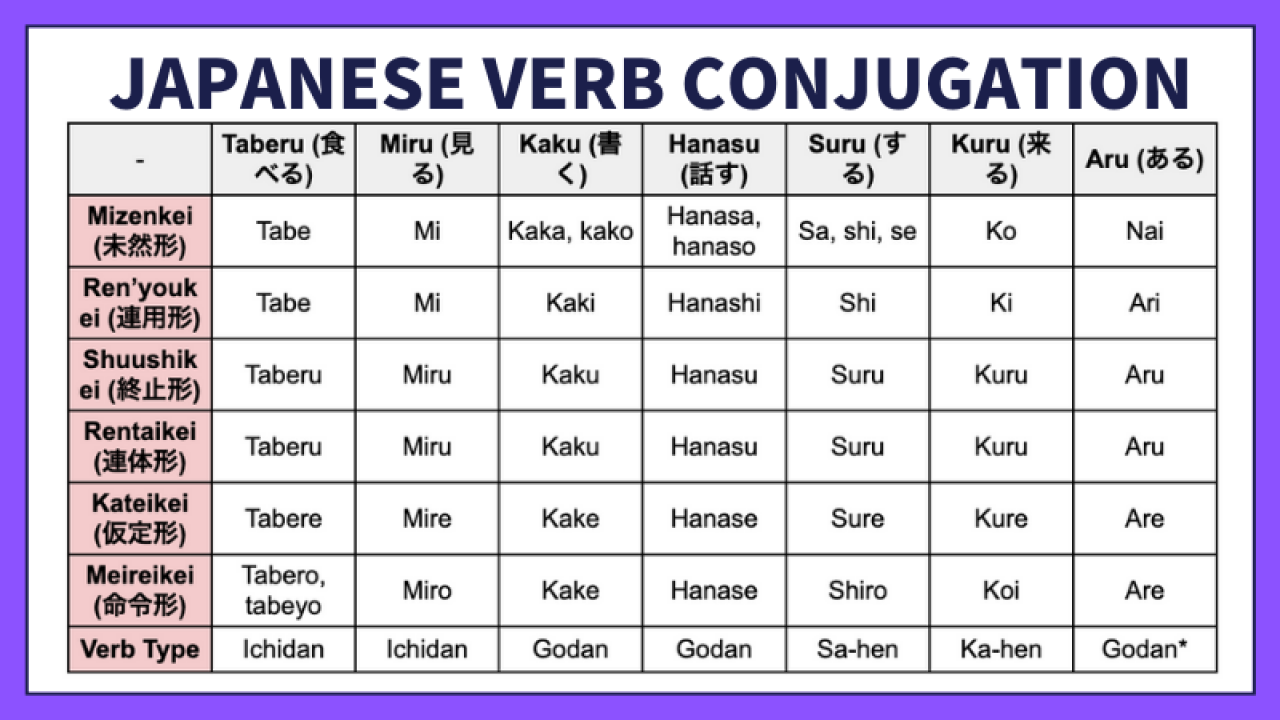
Japanese Verbs Conjugation Chart
Welcome to the only site on the web featuring Japanese verb conjugation and pictures of alien monsters Enter the dictionary form of a Japanese verb and click the button! Alternatively check out the list of Japanese verbs or Ultra Handy Search

What is Godan/Ichidan or Uverb/Ruverb in Japanese? Crunchy Nihongo!
Japanese Verb Conjugation In Japanese, you can type in base verb forms such as " ある ", " 行く ", " 食べる "… but also conjugated forms (" あります ", " 行かなかった ", " 食べられません "). The conjugator recognizes kanji as well as hiragana (" いかなかった ") and romaji (" ikanakatta ").
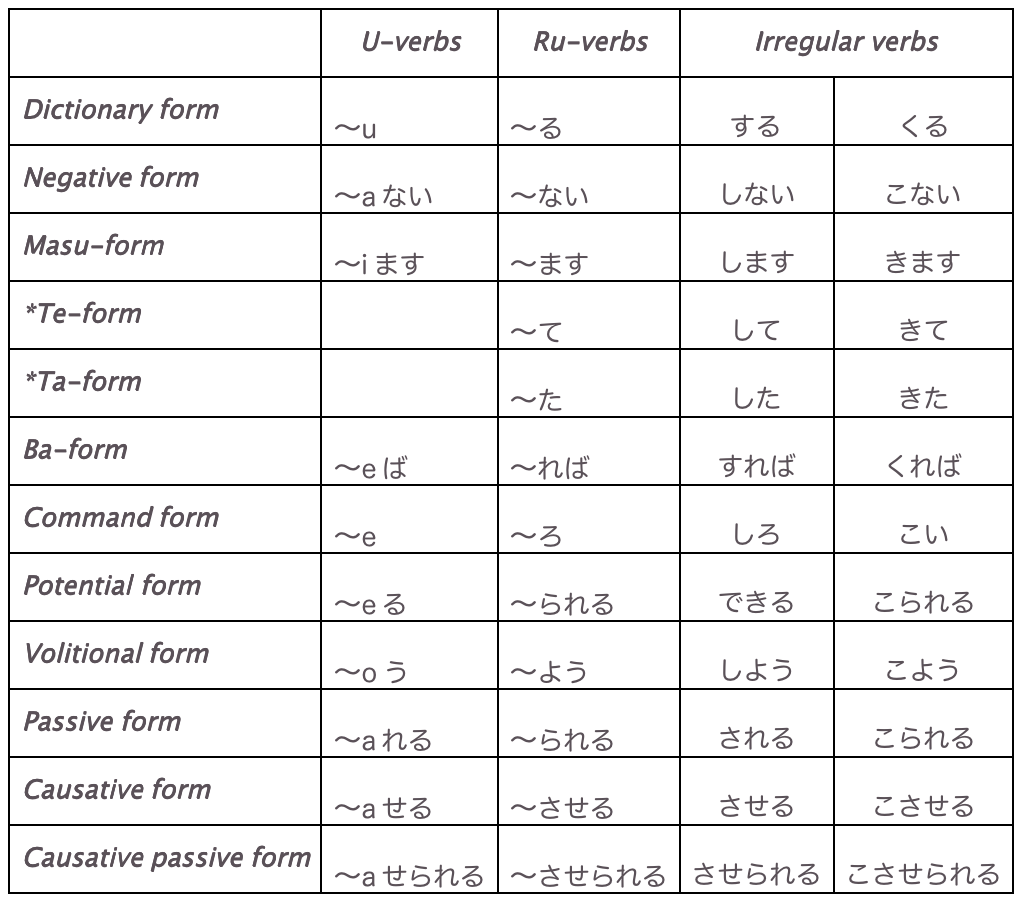
Japanese Japanese Verbs Conjugation Reference Chart Poster Printable ubicaciondepersonas.cdmx
Japanese Conjugation Practice Current Streak 0 Max Streak 0 泳 およ ぐ swim 🚫 Negative 👪 Plain Learn how to conjugate Japanese verbs and adjectives! Includes present tense, past tense, te form, and adverbs.

Japanese Verb Basics Part 1 Verb Groups & the Masu Form
The chart below shows how to conjugate Japanese Godan verbs: Base 1: Base 1 can not be used by itself but becomes the plain form negative simply by adding -nai. (ex. hanasanai - I won't say anything.) If the verb ends in う (u) then the end for Base 1 becomes わ (wa). (ex. au (Base 1) -> awa) (Plain form is what people use when talking to a.
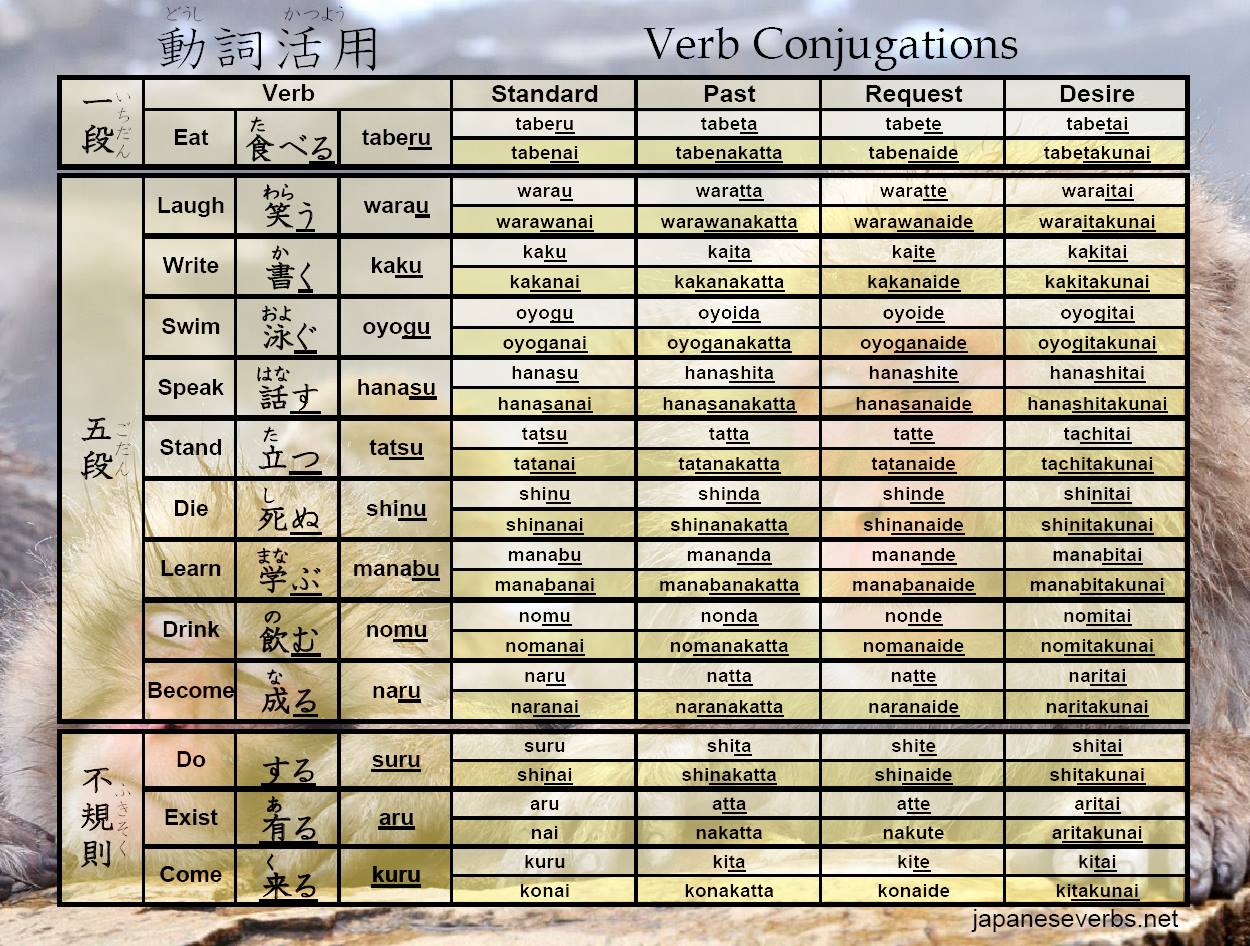
How to Conjugate Japanese Verbs pt. 1 Hattori Japanese Language School
Japanese Verb Conjugation: Present Tense, Masu-Form and Plain Form Past Tense: Formal Mashita-Form and Plain Ta-Form Forming Negative Verbs in Japanese: Masen, Masen Deshita, Nai, and Nakatta Te-Form in Japanese Japanese Verb Conjugation Practice — Try It Out! Japanese Verb Conjugation Basics: Mastered!
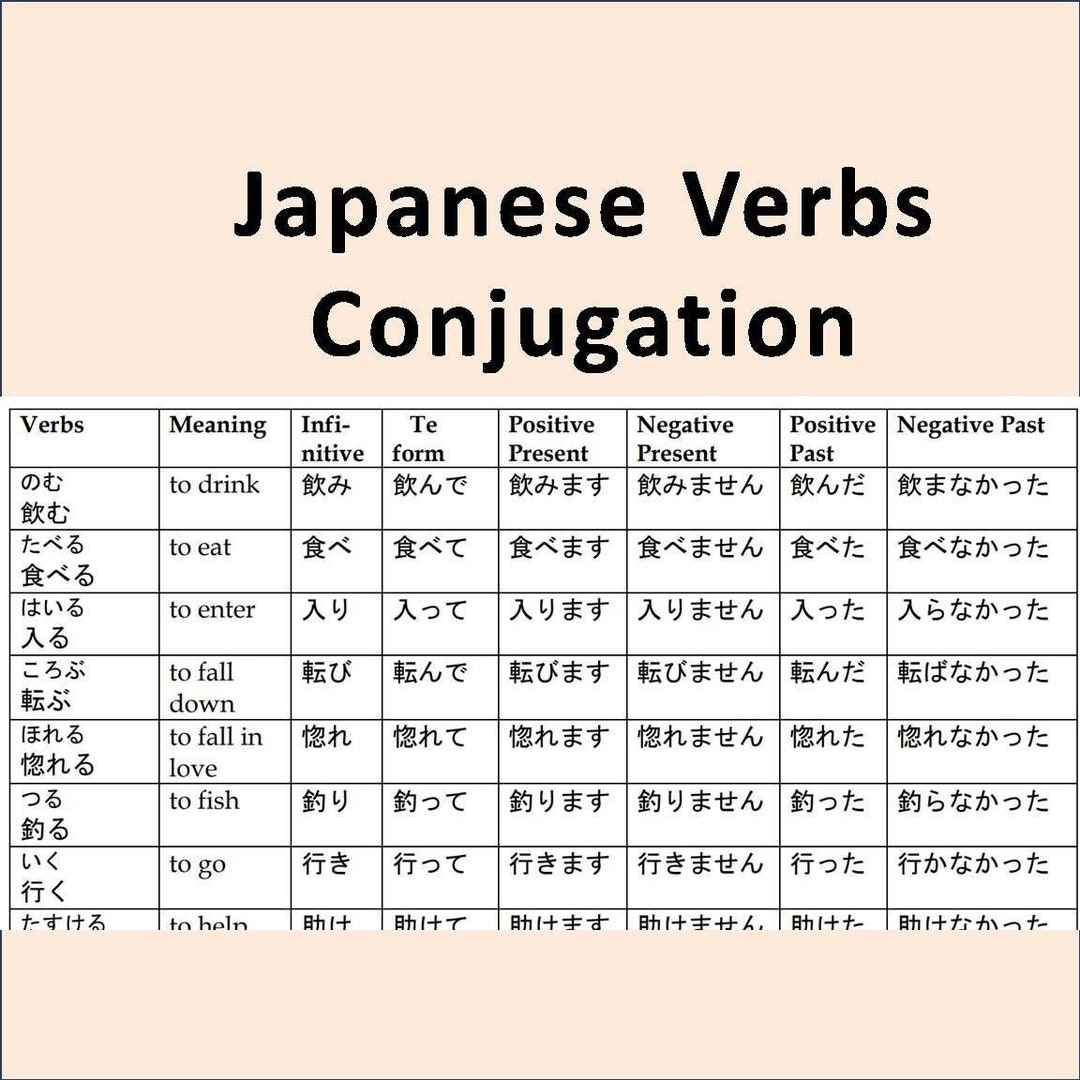
Japanese Verbs Conjugation Japanese for Beginners More Than 60 Verbs Instant Download Etsy
ある 2 する 3 続ける 4 感じる 5 得る 6 見る 7 出る 8 分かる 9 考える 10 足る 11 入る 12 取る 13 すぎるる 14 来る 15 思う 16 行く 17 出来る 18 しまう 19 くれる 20 戻る 21 答える 22 困る 23 与える 24 終わる 25 なさる 26 走る 27 受ける 28 守る 29 食べる 30

[Summary] Japanese Verb Conjugation Perfect Guide
The 6 Verb Conjugations We'll Cover in This Guide I. The 3rd Row: Plain/Dictionary Form - 辞書形 (Jisho-Kei): Do/Will Do II. The 1st Row: Negative Form - 否定形 (Hitei-Kei): Won't / Don't Do III. The 2nd Row: Masu / Polite Form - ます形 (Masu-Kei): Do / Will Do IV. The 4th Row: Imperative Form - 命令形 (Meirei-Kei): Do! V.

Japanese Verbs Conjugation Chart
Japanese verbs have different conjugation patterns depending on what type they are — godan, ichidan, or irregular. Learn all about verb types and conjugation on this page. Table of Contents The Basics Godan Verbs (五段動詞) Ichidan Verbs (一段動詞) Godan Verbs Disguised as Ichidan Verbs Irregular Verbs (変格動詞) Beyond the Basics The Loss of the /W/ Sound

Conjugating TeForm in Japanese Handy Illustrated Howto Guide!
Japanese verb conjugations are independent of person, number and gender (they do not depend on whether the subject is I, you, he, she, we, etc.); the conjugated forms can express meanings such as negation, present and past tense, volition, passive voice, causation, imperative and conditional mood, and ability.

Japanese verb conjugation chart
Japanese verb conjugation Japanese (日本語) is spoken by over 120 million people in Japan. The Japanese language is written with a combination of three scripts: Chinese characters called kanji, and two syllabic scripts hiragana and katakana.

Learn JLPT N5 Japanese Verb Conjugation Negative Forms Japanese language lesson YouTube
Every single Japanese verb conjugation explained in one definitive video textbook that looks at over 250 different examples of verb conjugation usage, coveri.